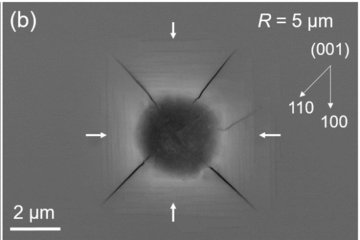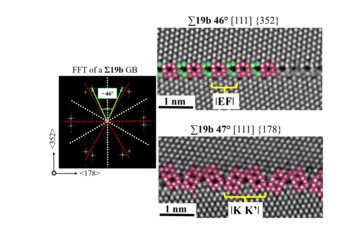All genres
681.
Talk
Interface-related phenomena in coupled direct and inverse magneto-caloric materials: A first-principles study. DPG Frühjahrstagung, Dresden, Germany (2014)
682.
Talk
Point defects in supercells: Correction schemes for the dilute limit. Workshop on Ab-initio description of charged systems and solid/liquid
interfaces
, Santa Barbara, CA, USA (2014)
683.
Talk
Role of the defect creation strategy for modelling dangling bonds in a-Si:H. MRS Spring Meeting, San Francisco, CA, USA (2014)
684.
Talk
Thermodynamics of materials up to the melting point: The role of anharmonicities. Asia Sweden Meeting on Understanding Functional Materials from Lattice dynamics, Guwahati, India (2014)
685.
Talk
Ab initio based understanding of the segregation and diffusion mechanisms of hydrogen in steels. Workshop on Hydrogen Embrittlement, Düsseldorf, Germany (2014)
686.
Talk
Importance of anharmonic free energy contributions in an ab initio description of the hcp to bcc transition in Ti. DPG-Frühjahrstagung 2014, Dresden, Germany (2014)
687.
Talk
Impact of weak and strong magnetic coupling on the thermodynamics of chromium. DPG spring meeting 2014 , Dresden, Germany (2014)
688.
Talk
Phase stabilities of metals and steels - The impact of magnetic excitations from fi rst-principles. ADIS (Ab initio Description of Iron and Steel) Conference 2014 , Ringberg Castle, Rottach-Egern, Germany (2014)
689.
Talk
Interplay between Plasticity Mechanisms, Entropy, and Chemical Composition: An Ab initio approach. Plasticity 2014, Freeport, Bahamas (2014)
690.
Talk
Materials design and discovery on the computer: Prospects and challenges. ICYS workshop, Tsukuba, Japan (2014)
691.
Talk
Ab initio thermodynamics: A novel route to understand and design structural materials. NIMS, Tsukuba, Japan (2014)
692.
Talk
Materials design based on predictive ab initio thermodynamics. Colloquium at Universität Magdeburg, Magdeburg, Germany (2014)
693.
Talk
A brief introduction to surface science from a modelers perspective. Seminar at Ecole Polytechnique, Paris, France (2014)
694.
Talk
Pourbaix diagrams and stability in electrochemical environment. Catalysis Workshop Reisensburg, Reisensburg, Germany (2014)
695.
Talk
Connecting thermodynamic concepts of semiconductor defect chemistry with electrochemistry. Calphad Conference, Changsha, China (2014)
696.
Talk
Understanding hydrogen embrittlement by a combined atomistic-analytic multiscale approach. MDRC Conference , Lake Arrowhead, CA, USA (2014)
697.
Talk
Discrete Models – Material Properties from Electrons and Atoms. ICMEg Conference, Rolduc, The Netherlands (2014)
698.
Talk
First principles calculations of CCA stability. Workshop CC Alloys , München, Germany (2014)
699.
Talk
Ab initio thermodynamics: A novel route to understand and design structural materials. CSW Conference, Tsukuba, Japan (2014)
700.
Talk
Materials design and discovery on the computer: Prospects and challenges. IUMRS-ICA2014, Fukuoka, Japan (2014)











